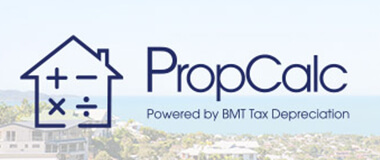Negative gearing tax deductions set to soar
With interest rates going up, negative gearing tax deductions are too
The Reserve Bank of Australia remains resolute in returning inflation to target. While inflation is expected to peak at around 8% before declining towards the end of 2023, two of the big four banks, ANZ and Westpac, predict that the cash rate will hit 3.85 per cent in May 2023. The cash rate at the time of writing was 3.60 per cent, the highest level in eleven years.

The rate rises have been felt by the Australian property market. According to CoreLogic, national home values were 1.1 per cent lower in December 2022, taking values 5.3 per cent lower over the 2022 calendar year.
However, these factors don’t seem to be deterring property investors, with more investors entering the market in recent years. In December 2022, the percentage of total loans going to investors was sitting at 33.3 per cent, up from 22.6 per cent two years prior in December 2020.
Rental value growth remains high. Across all Australian dwellings, there was an annual rental growth rate of 10 per cent to October 2022, and Australian gross rent yields rose to 3.7 per cent, up from a recent low of 3.21 per cent in January 2022.
These factors seem to be encouraging investors to take advantage of opportunities as property prices continue to trend down and rents increase.
Negative gearing is once again supporting the private funding of housing, after recent modelling by the Parliamentary Budget Office (PBO) estimated that the policy would generate $13.8 billion in reduced tax liabilities in financial year 2022-23 at the cash rate of 3.35 per cent. This means that negative gearing won’t be going anywhere any time soon, as it helps to carry private property investors through a softer property market and increase the number of available rental properties.
Depreciation and negative gearing
Negative gearing occurs when the rental income earned from an investment property is less than the interest repayments and other expenses. Put another way, it is when the cost of owning a property outweighs the income generated each year, resulting in the investor making a loss.
Rising interest rates increase the cost of holding a property, creating higher tax deductions for property investors. On the other hand, when costs like interest rates are low and property becomes positively geared, the owner pays tax on these profits.
Depreciation plays a crucial role in this because it adds to this total loss without an expense. If a portion of the loss is a result of depreciation deductions, which are ‘non-cash’ losses, then the associated loss leads to an actual cash gain.
If you’re making a loss, why do it?
The idea behind a negative gearing strategy is that the capital gain made by the investor over time will outweigh the losses from the rental shortfall. There is also the expectation that increases in rental income will offset expenses over time, turning the property into a positive cash flow scenario.
This simple case study demonstrates a negatively geared property investment scenario.
Case study
Tim borrows $560,000 to purchase an investment property valued at $800,000 (loan-to-value ratio of 70 per cent). Tim has an investment loan with monthly interest-only repayments. The loan interest rate is 5.52 per cent per annum putting annual interest costs at $30,912.
The same loan twelve months earlier would have cost Tim closer to $14,000 in interest per annum resulting in a positively geared property.
The property is rented for $600 per week. Tim is taxed at 32.5 per cent. Tim has a ‘non-cash’ tax deduction available for depreciation of $9,000 regardless of gearing.
| Pre-tax cash flow | |
| Annual income | $31,200 |
| Less loan interest | $30,912 |
| Less other expenses | $7,000 |
| Total loss before depreciation | $6,712 |
| Less depreciation | $9,000 |
| Total loss (tax deduction) | $15,712 |
| Post-tax cash flow | |
| Tax refund (32.5% tax rate) | $5,106 |
| Net cost to own property per annum | $1,606 |
| Net cost to own property per week | $31 |
| Assumptions: Tax paid excludes the Medicare Levy. | |
Even though interest rates have more than doubled in the past year deductables claimed using negative gearing result in a holding cost of only $31 per week for Tim.
For more information on tax depreciation and how it can improve your cash flow, contact BMT on 1300 728 726.
Disclaimer: This information is intended to be general in nature and is not personal financial advice. It does not take into account your objectives, financial situation or needs.



























